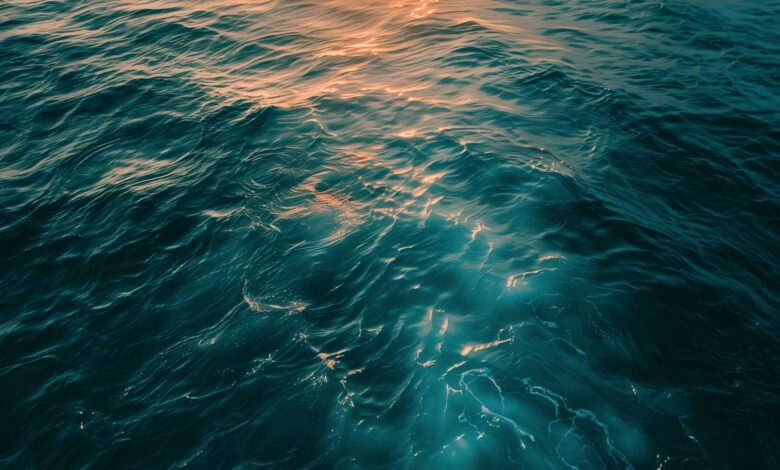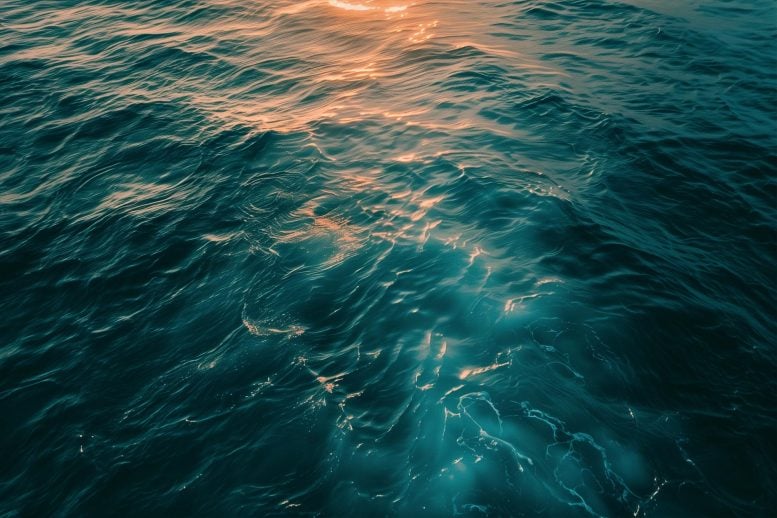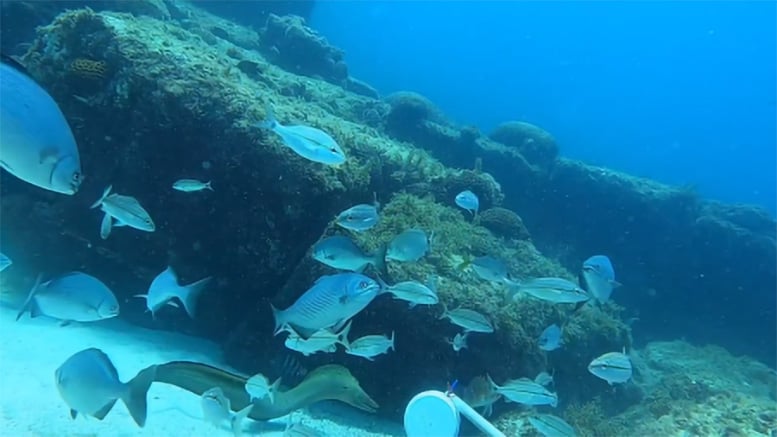New Study Redefines Marine Boundaries in the Southwest Atlantic


A study by researchers in São Paulo has redefined the upper boundary of the mesophotic zone in the Southwest Atlantic to 15-18 meters, challenging the previous 30-meter estimate and revealing distinct ecological and species differences at this depth. Credit: SciTechDaily.com
Researchers have newly established the vertical boundaries of the subtropical ocean region along the South American coastline. They discovered that the upper boundary of the mesotrophic zone is actually located in shallower waters than previously thought.
Researchers at the Federal University of São Paulo (UNIFESP) and the University of São Paulo (USP), funded by FAPESP, have accurately defined the vertical boundaries of marine environments in the Southwest Atlantic for the first time. This area includes the offshore and coastal zones along the Atlantic coast of South America.
The study is reported in an article published in the journal Marine Environmental Research.
The main finding is the upper boundary of the mesophotic zone, the “middle light” region between the brightly lit ocean surface and the darkest depths. The lower limit of the mesophotic zone is the furthest that sunlight can penetrate the ocean.
Previous studies put the upper limit of this zone at a depth of 30 m, but the authors’ measurements of light penetration and fish inventories showed it to lie at a depth of between 15 m and 18 m in the subtropical coastal region.

A Spotted moray (Gymnothorax moringa), at the bottom of the frame, surrounded by a shoal of Tomtate grunts (Haemulon aurolineatum), Sea chubs (Kyphosus spp.), and Horse-eye jacks (Caranx latus), with one Squirrelfish (Holocentrus adscensionis), at Saco da Banana near “Snake Island,” properly called Ilha da Queimada Grande. Credit: LabecMar-UNIFESP
“Besides the amount of light, which at this depth is only 10% of surface light incidence, we detected a different fish fauna, as well as species that circulate between the shallow and mesophotic zones,” said Maisha Gragnolati, first author of the article. The study was conducted while she was researching for a master’s degree in biodiversity and marine and coastal ecology at the Institute of Marine Sciences (IMAR-UNIFESP) in Santos (São Paulo state, Brazil).
According to the researchers, the gap between the classical definition widely found in the scientific literature (30 m) and their finding (18 m) is due to the fact that most previously published studies were conducted in tropical regions above the Tropic of Capricorn, whereas the Southwest Atlantic is mostly subtropical (below this line).
“Another key point is that studies normally focus on coral reefs, but rocky reefs are far more common in subtropical regions and involve quite different interactions with light and the organisms that live there,” said Fábio Motta, last author of the article and a professor at UNIFESP affiliated with its Marine Ecology and Conservation Laboratory (LabecMar).
The study was part of the project “Science applied to public use management and knowledge boundaries of Marine Protected Areas: from visitors’ experience to biodiversity of subtropical mesophotic reefs,” supported by FAPESP via its Research Program on Biodiversity Characterization, Conservation, Restoration and Sustainable Use (BIOTA), with Motta as principal investigator.
Coast of São Paulo
In the study, the researchers measured temperature, depth, and light penetration, as well as inventorying landforms and fish species around islands in three of São Paulo state’s marine conservation units: Laje de Santos State Park, the Central Coast Marine Environmental Protection Area, and Tupiniquins Ecological Station. They analyzed a total of 12 rocky reefs.
At the sampling points, the researchers used BRUVs (baited remote underwater video stations, with waterproof cameras on tripods, a light, and a long arm holding a piece of sardine as bait) to explore fish assemblages in shallow and mesophotic habitats at depths between 6 m and 43 m. They filmed for an hour and recorded water temperature, depth, and nearby landforms. Light penetration was estimated using an international ocean database. This data and the fish species identified helped determine the upper limit of the mesophotic zone, which is reached by only 10% of the incident light at the sea surface.
“Light penetration directly affects primary production, so there are fewer organisms that need light for photosynthesis [i.e. plants]. As expected, no herbivorous fish were found in this region,” Gragnolati said.
They analyzed the videos with software that identified the fish species and also used the images to count and measure the fish, estimate their relative abundance, and quantify the biomass in the area.
Species were classified according to diet (carnivore, herbivore, or omnivore) and whether they were fishing targets in the region. The difference in diversity between the mesophotic zone and the shallow zone was 73%. A group of eight species accounted for half the difference between the two zones.
The Red porgy or Common seabream (Pagrus pagrus) and the Sand perch (Diplectrum formosum) were the species most frequently observed in the mesophotic zone, while the Tomtate grunt (Haemulon aurolineatum) was the species most often recorded in the shallow zone.
“The study also evidenced the ecological effects of full protection marine conservation units, where no fishing is allowed. Laje de Santos State Park, for example, had 2.5 times the species richness and eight times the target species biomass of areas where fishing is allowed,” Motta said.
The São Paulo coast has the most marine protection in Brazil – 53.7% of the region has some degree of protection – yet the number of marine species threatened with extinction is also the highest in the country. Fishing is banned in only 5.7% of the region.
Reference: “Vertical structure of reef fish assemblages and light penetration reveal new boundaries of mesophotic ecosystems in the subtropical Southwestern Atlantic” by Maisha Gragnolati, Fernanda A. Rolim, Guilherme H. Pereira-Filho, Ana Clara S. Athayde, Áurea M. Ciotti and Fabio S. Motta, 27 April 2024, Marine Environmental Research.
DOI: 10.1016/j.marenvres.2024.106527
The study won a prize for the best oral presentation in early May at the Brazilian Reef Meeting (EReBra) held in Niterói (Rio de Janeiro state).
The study was funded by the São Paulo Research Foundation.



